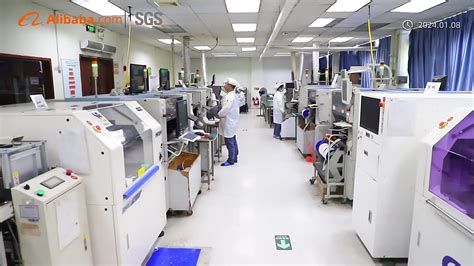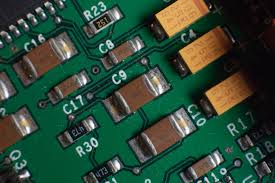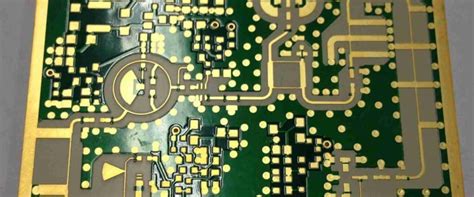Precision OEM Circuit Board Manufacturing Solutions

Key Takeaways
When selecting PCB manufacturing companies for your electronic projects, understanding core competencies ensures you secure optimal performance and long-term reliability. Partnering with experienced providers offering IPC Class III compliant solutions guarantees adherence to the highest industry standards—critical for aerospace, medical, or defense applications. Over seven decades of engineering expertise enables these manufacturers to deliver heavy copper circuit boards that withstand extreme conditions while maintaining precision tolerances (±0.001").
Balancing PCB manufacturing cost with quality requires leveraging advanced production techniques like automated optical inspection (AOI) and design-for-manufacturability (DFM) analysis. These processes minimize material waste and reduce lead times, ensuring cost-efficiency without compromising durability. For businesses scaling their PCB manufacturing business, tight tolerance control (≤4 mil trace widths) becomes pivotal in achieving superior signal integrity and thermal management.
By prioritizing PCB manufacturing partners with vertically integrated capabilities, you gain access to end-to-end solutions—from prototyping to volume production—optimized for both performance and scalability. This strategic approach mitigates risks in complex assemblies while aligning with evolving technical demands in the electronics sector.
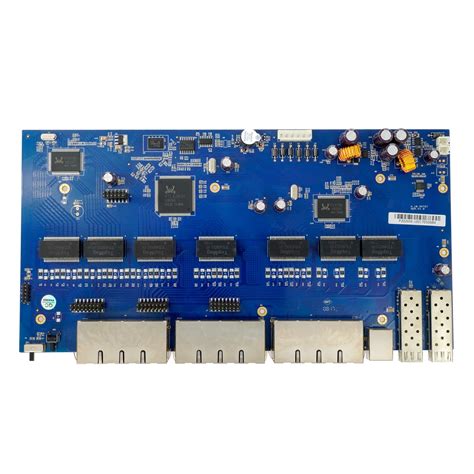
Precision PCB Manufacturing for OEM Excellence
When selecting PCB manufacturing partners, you need solutions that align with rigorous quality benchmarks while maintaining cost-efficiency. Leading PCB manufacturing companies leverage advanced technologies to deliver tight tolerance control—critical for high-frequency applications and miniaturized electronics. By prioritizing IPC Class III standards, these manufacturers ensure reliability in aerospace, medical, and industrial systems where failure is not an option.
Optimizing PCB manufacturing cost requires balancing material selection, design complexity, and production volumes. For instance, heavy copper boards enhance durability in power electronics but demand precise fabrication techniques to avoid material waste. Partnering with experienced PCB manufacturing business providers enables you to integrate design-for-manufacturing (DFM) principles, reducing rework and accelerating time-to-market.
Transitioning to the next section, 70 Years of Circuit Board Engineering Expertise underscores how decades of refinement in stackup configurations and thermal management directly contribute to superior performance. This foundation ensures your OEM projects meet both technical specifications and budgetary constraints seamlessly.
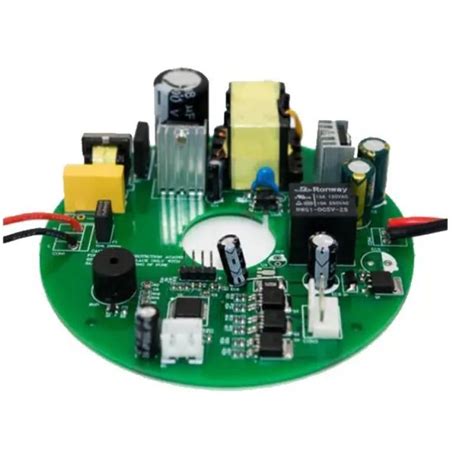
70 Years of Circuit Board Engineering Expertise
When you partner with PCB manufacturing companies that have refined their craft over seven decades, you gain access to institutional knowledge that shapes modern electronics. Over 70 years, innovations in PCB manufacturing have evolved from manual assembly to automated precision, enabling tighter tolerances and higher reliability. This legacy ensures that your designs benefit from proven methodologies while integrating cutting-edge techniques like heavy copper layering and advanced thermal management.
The longevity of a PCB manufacturing business isn’t just about time—it’s about adapting to shifting industry demands. For instance, optimizing PCB manufacturing cost without compromising quality requires balancing material science, process efficiency, and waste reduction—a skill honed through decades of problem-solving. Such expertise allows manufacturers to deliver IPC Class III-compliant boards that meet rigorous standards for aerospace, medical devices, and industrial systems.
By leveraging deep-rooted engineering principles, seasoned providers minimize risks in prototyping and scale production seamlessly. Whether you’re developing high-frequency circuits or power-dense layouts, this heritage translates into boards that perform consistently under stress. In an era where margins matter, partnering with experienced PCB manufacturing specialists ensures your projects inherit seven generations of technical refinement.
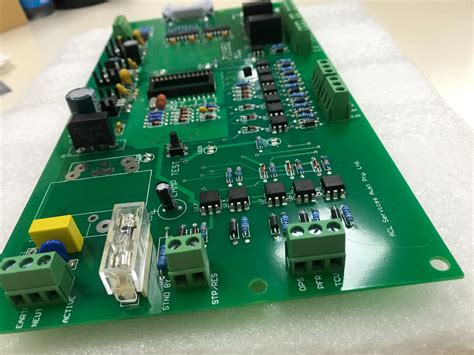
IPC Class III Compliant OEM PCB Solutions
When sourcing PCB manufacturing services for mission-critical applications, compliance with IPC Class III standards ensures your products meet the highest reliability thresholds. Unlike lower-tier classifications, IPC Class III mandates rigorous testing for PCB manufacturing companies, requiring boards to withstand extreme conditions in aerospace, medical, or industrial systems. These standards demand precision in material selection, traceability, and defect tolerance—factors that directly influence PCB manufacturing cost but deliver unmatched long-term value.
Leading PCB manufacturing business partners optimize this balance by integrating advanced processes like automated optical inspection (AOI) and impedance control. For instance, heavy copper designs—common in high-power applications—benefit from Class III’s strict plating requirements, ensuring consistent conductivity under thermal stress. Tight tolerances (±2 mils or less) further minimize signal loss, aligning with the performance demands of next-gen electronics.
By prioritizing IPC Class III compliance, you mitigate risks of field failures while adhering to industry benchmarks. This approach not only elevates product reliability but also streamlines compliance audits, making it a strategic investment for OEMs aiming to scale in regulated markets.
Heavy Copper Circuit Boards for Enhanced Durability
When designing electronics that demand high reliability under extreme conditions, heavy copper circuit boards become critical. These specialized boards use copper layers thicker than 3 oz—up to 20 oz or more—to handle elevated current loads, reduce heat buildup, and withstand mechanical stress. For industries like automotive, aerospace, or industrial automation, this durability ensures longer lifespans for power supplies, motor controllers, and high-voltage systems.
Tip: When selecting a PCB manufacturing partner, verify their capability to handle heavy copper designs without compromising layer alignment or thermal management.
While PCB manufacturing cost may rise with thicker copper due to advanced etching and plating processes, the long-term savings from reduced failure rates often justify the investment. Leading PCB manufacturing companies optimize material usage and layer stacking to balance performance and affordability. For instance, hybrid designs—combining standard and heavy copper layers—can lower PCB manufacturing business expenses while maintaining robustness in critical areas.
Advanced fabrication techniques, such as controlled-depth milling and step plating, enable tighter tolerances even with heavy copper. This precision ensures consistent performance across high-vibration environments. By partnering with experts in heavy copper PCB manufacturing, you gain access to tailored solutions that align with IPC Class III standards, guaranteeing reliability for mission-critical applications.
Remember: Durability isn’t just about material thickness—it’s about how seamlessly design, materials, and manufacturing expertise converge to meet your project’s demands.
Optimizing Cost-Efficiency in PCB Production
When partnering with PCB manufacturing companies, balancing performance and affordability becomes critical. Material selection plays a pivotal role—opting for standardized substrates or adjusting copper weights can reduce PCB manufacturing cost without compromising durability. For instance, heavy copper designs, while robust, may require strategic layer planning to avoid over-engineering. Advanced PCB manufacturing workflows leverage automation to minimize waste, ensuring tighter tolerances are maintained consistently across high-volume orders.
Another key strategy involves design optimization early in the prototyping phase. Simplifying board layouts, reducing via counts, and standardizing component footprints help lower assembly expenses. Many PCB manufacturing business models now integrate design-for-manufacturability (DFM) analysis, identifying cost drivers before production begins. Additionally, bulk purchasing agreements or consolidating orders with trusted suppliers can further enhance economies of scale.
Finally, adopting IPC Class III standards ensures reliability, reducing long-term costs linked to rework or field failures. By aligning your priorities with a manufacturer’s expertise in PCB manufacturing, you achieve not just immediate savings but sustained value across product lifecycles.
Tight Tolerance Control in Electronics Manufacturing
Achieving tight tolerance control in PCB manufacturing requires balancing precision engineering with process optimization. Modern electronics demand components that fit seamlessly, especially in applications like aerospace or medical devices where even micron-level deviations can compromise functionality. Leading PCB manufacturing companies leverage advanced techniques—such as laser drilling and automated optical inspection—to maintain tolerances as tight as ±0.002" for critical features like via holes and trace widths.
For OEMs, this precision directly impacts PCB manufacturing cost and product reliability. Tighter tolerances often necessitate specialized materials or slower production speeds, but they reduce post-assembly rework and field failures. To optimize costs, manufacturers use statistical process control (SPC) to identify variability hotspots, ensuring consistent quality without over-engineering.
| Tolerance Parameter | Standard Range | High-Precision Range |
|---|---|---|
| Trace Width | ±10% | ±3% |
| Hole Diameter | ±0.003" | ±0.001" |
| Layer Alignment | ±0.005" | ±0.002" |
In the PCB manufacturing business, maintaining these standards requires collaboration between design and production teams. For instance, specifying impedance-controlled routing early in the design phase avoids costly adjustments during fabrication. By prioritizing tolerance control, you ensure boards meet IPC Class III requirements while aligning with performance and budgetary goals—a critical advantage in competitive markets.

Superior Performance with Advanced PCB Designs
When optimizing electronic systems, PCB manufacturing processes must align with cutting-edge design methodologies to deliver peak performance. Modern advanced PCB designs integrate high-density interconnects (HDI), embedded components, and impedance-controlled routing to meet the demands of high-frequency and miniaturized applications. Leading PCB manufacturing companies leverage simulation-driven prototyping and multilayer stacking techniques to ensure signal integrity while minimizing electromagnetic interference—critical for industries like aerospace or medical devices.
Balancing PCB manufacturing cost with technical precision requires strategic material selection and process optimization. For instance, using advanced substrate materials with low dielectric loss can reduce power dissipation, while automated optical inspection (AOI) systems enhance yield rates. This approach ensures your PCB manufacturing business avoids over-engineering without compromising reliability, even in mission-critical environments.
Transitioning seamlessly from design to production, manufacturers now employ AI-driven design-for-manufacturability (DFM) checks to preemptively address potential flaws. Such proactive measures not only accelerate time-to-market but also align with the broader trend of cost-efficiency discussed in earlier sections. By prioritizing both innovation and scalability, advanced PCB solutions empower your projects to outperform conventional benchmarks while adhering to rigorous industry standards.

Reliable OEM Circuit Board Manufacturing Standards
When sourcing PCB manufacturing services, you need partners that prioritize traceable quality controls and industry-aligned protocols. Leading PCB manufacturing companies achieve reliability by adhering to IPC Class III standards, which govern everything from material selection to final testing. This ensures boards meet extreme environmental demands—critical for aerospace, medical devices, or industrial automation.
A key differentiator lies in balancing PCB manufacturing cost with uncompromised performance. Advanced firms optimize this through design-for-manufacturability (DFM) reviews, minimizing material waste while maintaining heavy copper layers (up to 20 oz) for high-current applications. Tight tolerances (±0.002") are enforced via laser direct imaging and automated optical inspection, reducing rework risks.
For PCB manufacturing business models focused on scalability, standardized processes like automated solder mask application and thermal stress testing ensure consistency across high-volume batches. Compliance with RoHS and REACH further safeguards against supply chain disruptions. By aligning with certified partners, you secure not just product reliability but also long-term operational stability—a non-negotiable for OEMs building mission-critical systems.
Conclusion
When selecting a partner for PCB manufacturing, it’s critical to prioritize expertise that aligns with your technical and budgetary needs. Established PCB manufacturing companies leverage decades of engineering knowledge to deliver solutions that balance precision with PCB manufacturing cost efficiency. By integrating advanced design methodologies and rigorous quality controls, these partners ensure your projects meet exacting standards—whether you require heavy copper layers for durability or tight tolerances for high-frequency applications.
For businesses scaling their PCB manufacturing business, the focus should extend beyond immediate production costs to long-term reliability. Partnering with IPC Class III-certified manufacturers guarantees adherence to industry-leading benchmarks, minimizing risks of field failures. Additionally, optimized material utilization and process innovations help reduce waste, directly impacting your bottom line. Ultimately, the right manufacturing collaboration not only elevates product performance but also strengthens your competitive edge in fast-paced electronics markets. By prioritizing traceable quality and scalable workflows, you position your operations for sustained success in an evolving industry.
FAQs
What defines a reliable PCB manufacturing partner for OEM projects?
A trusted PCB manufacturing company demonstrates proven expertise in IPC Class III standards, advanced processes like heavy copper fabrication, and precision tolerance controls. Look for suppliers with decades of experience and transparent cost structures to ensure PCB manufacturing cost aligns with your project’s technical demands.
How do PCB manufacturing companies balance quality and affordability?
Top-tier providers optimize PCB manufacturing cost through automated workflows, material efficiency programs, and scalable production models. By leveraging economies of scale and design-for-manufacturability principles, they maintain tight tolerances while reducing waste in the PCB manufacturing business.
Why is compliance critical in PCB manufacturing for high-reliability applications?
Adherence to IPC Class III ensures boards withstand extreme conditions, from thermal stress to mechanical vibrations. This is non-negotiable for industries like aerospace or medical devices, where PCB manufacturing companies must guarantee zero-defect performance across every production batch.
What factors influence PCB manufacturing cost for custom designs?
Variables include layer count, material selection (e.g., high-Tg substrates), surface finishes, and testing protocols. Partnering with a PCB manufacturing business that offers upfront engineering reviews helps identify cost-saving opportunities without compromising on durability or electrical performance.
How do advanced designs improve outcomes in PCB manufacturing?
Innovations like embedded components and HDI layouts enable higher signal integrity and miniaturization. Experienced PCB manufacturing companies use simulation tools to validate designs pre-production, reducing prototyping cycles and ensuring first-pass success for complex OEM projects.
Ready to Elevate Your PCB Solutions?
For tailored PCB manufacturing strategies that align with your technical and budgetary needs, please click here to explore our OEM-focused capabilities.

